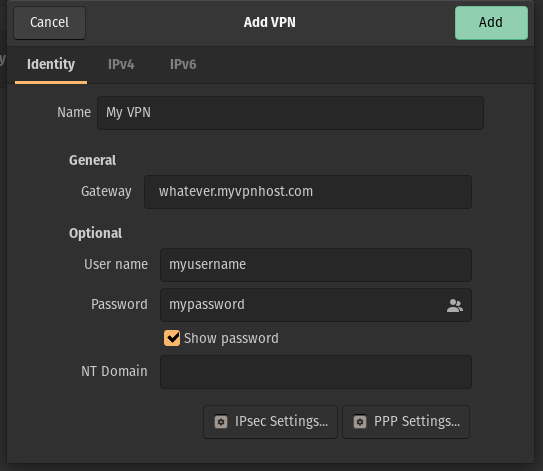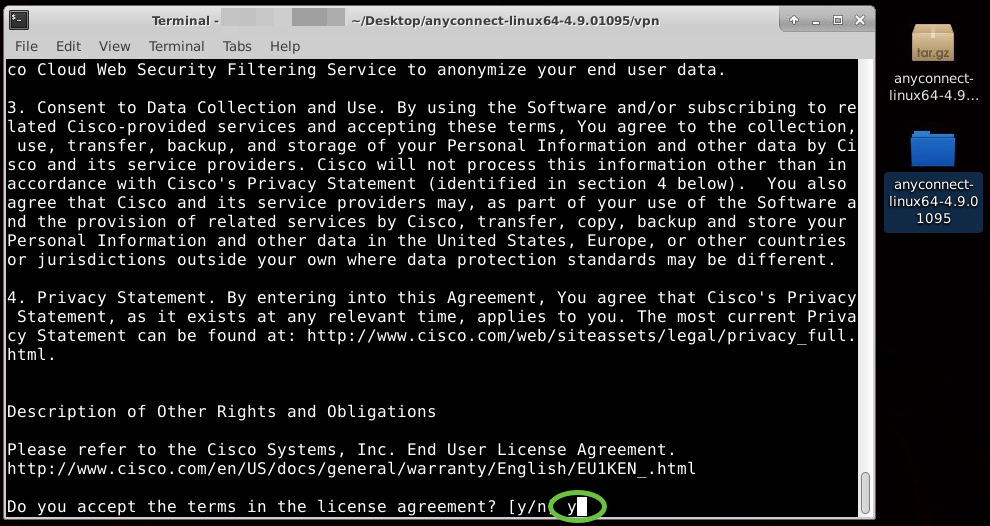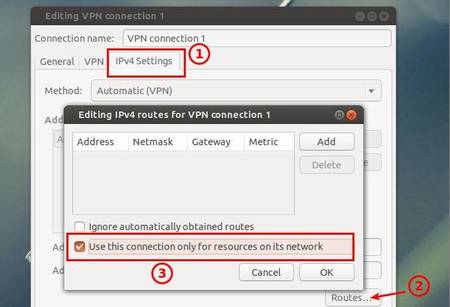- Dec 16, 2019 Install Cisco AnyConnect on Ubuntu / Debian / Fedora Connect To VPN Server with Cisco AnyConnect from Linux Terminal If you used the installation method covered in our guide, the vpn script used to connect, disconnect, and check the status of VPN is located in the directory below.
- On an Event, Log: Cisco AnyConnect Secure Mobility Client, Source: acvpnagent, Event ID: 2041. I have the Ubuntu-20.04 distribution in WSL2.
- Cisco Anyconnect Ubuntu
- Cisco Anyconnect For Linux Ubuntu
- Cisco Anyconnect Ubuntu 20.04 64-bit
- Anyconnect Ubuntu Download
- Installing Cisco Anyconnect Vpn Client On Ubuntu 20.04
- Cisco Anyconnect Ubuntu 20.04 Free
Objective
Openconnect - Open client for Cisco AnyConnect VPN, Juniper Network Connect/Pulse, PAN GlobalProtect. Ubuntu 20.04 focal/universe: Version 8.02-1build1 introduced.

The objective of this article is to guide you through installing, using, and the option of uninstalling AnyConnect VPN Client v4.9.x on Ubuntu Desktop.
Introduction
The Cisco AnyConnect Virtual Private Network (VPN) Mobility Client provides remote users with a secure VPN connection. It provides the benefits of a Cisco Secure Sockets Layer (SSL) VPN client and supports applications and functions unavailable to a browser-based SSL VPN connection. Commonly used by remote workers, AnyConnect VPN lets employees connect to the corporate network infrastructure as if they were physically at the office, even when they are not. This adds to the flexibility, mobility, and productivity of your workers. Cisco AnyConnect is compatible with Windows 7, 8, 8.1, and 10, Mac OS X 10.8 and later, and Linux Intel (x64).
Follow the steps in this article to install the Cisco AnyConnect VPN Mobility Client on a Ubuntu Desktop. In this article, Ubuntu version 20.04 is used.

If you are using a Windows computer, click here to view an article on how to install AnyConnect on Windows.
If you are using a Mac computer, click here to view an article on how to install AnyConnect on Mac.
AnyConnect Software Version
- AnyConnect - v4.9.x (Download latest)

Table of Contents
Installing AnyConnect Secure Mobility Client v4.9.x
Step 1
Download the AnyConnect Pre-Deployment Package for Linux from Cisco Software Downloads.
Anydesk download for windows 10. The latest release at the time of publication was 4.9.01095.
Step 2
Open the Terminal by pressing Ctrl+Alt+T on your keyboard. To navigate to the folder where you have downloaded the AnyConnect Client Package, use the command, ‘cddirectory name’. For more information on the ‘cd’ command, click here.
In this example, the file is placed on the Desktop.
The directory may be different based on the location of the AnyConnect file download. For long filenames or paths, start typing some characters and press the tab key on your keyboard. The filename will auto-populate. If it doesn't even after you press tab twice, it indicates that you need to type more number of unique characters. Alternately, you can use the 'ls' command to list the files in your current directory.
Step 3
The initial download is a tarball archive (several files packed into one), which must be extracted. The command ‘tar xvffilename’ will extract the contents to the same directory in which the initial file is located.
For more information on the ‘tar’ command, click here.
Step 4
Once the folder is extracted, use the ‘cddirectory name’ command again to navigate into the folder.
cd [Directory Name]
Step 5
After navigating into the main folder, ‘cd’ into the vpn sub-folder.
Step 6
To run the AnyConnect install script, type ‘sudo ./vpn_install.sh’. This will begin the installation process using superuser permissions.

sudo ./vpn_install.sh
For more details on the 'sudo' command, click here.
Step 7
Accept the terms in the license agreement to complete the installation by typing ‘y’.
Haroopad is a free and open source Markdown Editor. Haroopad is a markdown enabled document processor for creating web-friendly documents. You can author professional-looking documents of various formats: blog posts, slides, presentations, reports, email and more. Haroopad gives you the same editing experience regardless of. Haroopad is a free markdown enabled document processor for creating web-friendly documents. With this easy to use application, you can author professional-looking documents of various formats: blog posts, slides, presentations, reports, email and more. Haroopad is very customizable in terms of themes for the GUI as well as the general layout, the font size, text indentations and automated corrections if needed. Figure 5 shows the preferences dialog. You can extend the list of available themes by adding your own CSS-based layouts. Haroopad is a markdown enabled document processor for creating web-friendly documents. You can author various formats of documents such as blog article, slide, presentation, report, and e-mail as if experts did. Haroopad gives you same experiences in editing regardless of the platform you are working on. It runs on all three major operating systems—Windows, Mac OS X, and Linux. Haroopad.
The AnyConnect installation should complete, and the Terminal window can be closed.
Using AnyConnect Secure Mobility Client v4.9.x
Step 1

To access the Anyconnect app, open the Terminal by pressing Ctrl+Alt+T on your keyboard. Use the command, ‘/opt/cisco/anyconnect/bin/vpnui’.
/opt/cisco/anyconnect/bin/vpnui
If you encounter any errors through the Terminal, you can access the app from the applications menu as shown below.
To access the applications menu using the User Interface (UI), click on the start icon (appears as nine dots on the lower left corner). Choose the Anyconnect app.
Alternatively, press Super+A (Super key is the windows icon key) on your keyboard to bring up the search bar. Start typing 'Anyconnect' and the app will appear.
Step 2
Cisco Anyconnect Ubuntu
Click on the Anyconnect app.
Step 3
Enter the IP Address or Hostname of your desired server followed by the port number.
For RV340 family, the default port number is 8443.
Step 4
Some connections may not be secure using a trusted SSL certificate. By default, AnyConnect Client will block connection attempts to these servers.
Uncheck Block connections to untrusted servers to connect to these servers.
Uninstalling AnyConnect Secure Mobility Client v4.9.x
Step 1
Using Terminal, navigate to the folder that contains the uninstall shell script using the ‘cd’ command.
Cisco Anyconnect For Linux Ubuntu
In a default installation, these files will be located in /opt/cisco/anyconnect/bin/.
Step 2
To run the Anyconnect uninstall script, enter ‘sudo ./vpn_uninstall.sh’
Gm tis2web download. This will begin the uninstall process using superuser permissions. For more information on the 'sudo' command, click here.
Step 3
Cisco Anyconnect Ubuntu 20.04 64-bit
At the prompt, enter the sudo password and the client software will complete uninstallation.
Conclusion
Anyconnect Ubuntu Download
There you have it! You have now successfully learned the steps to install, use, and uninstall the Cisco AnyConnect Secure Mobility Client v4.9.x on Ubuntu Desktop.
For community discussions on Site-to-Site VPN, go to the Cisco Small Business Support Community page and do a search for Site-to-Site VPN.
AnyConnect App
Installing Cisco Anyconnect Vpn Client On Ubuntu 20.04
The Anyconnect App can be downloaded from the Google Play store or the Apple store.
Cisco Anyconnect Ubuntu 20.04 Free
Additional Resources
